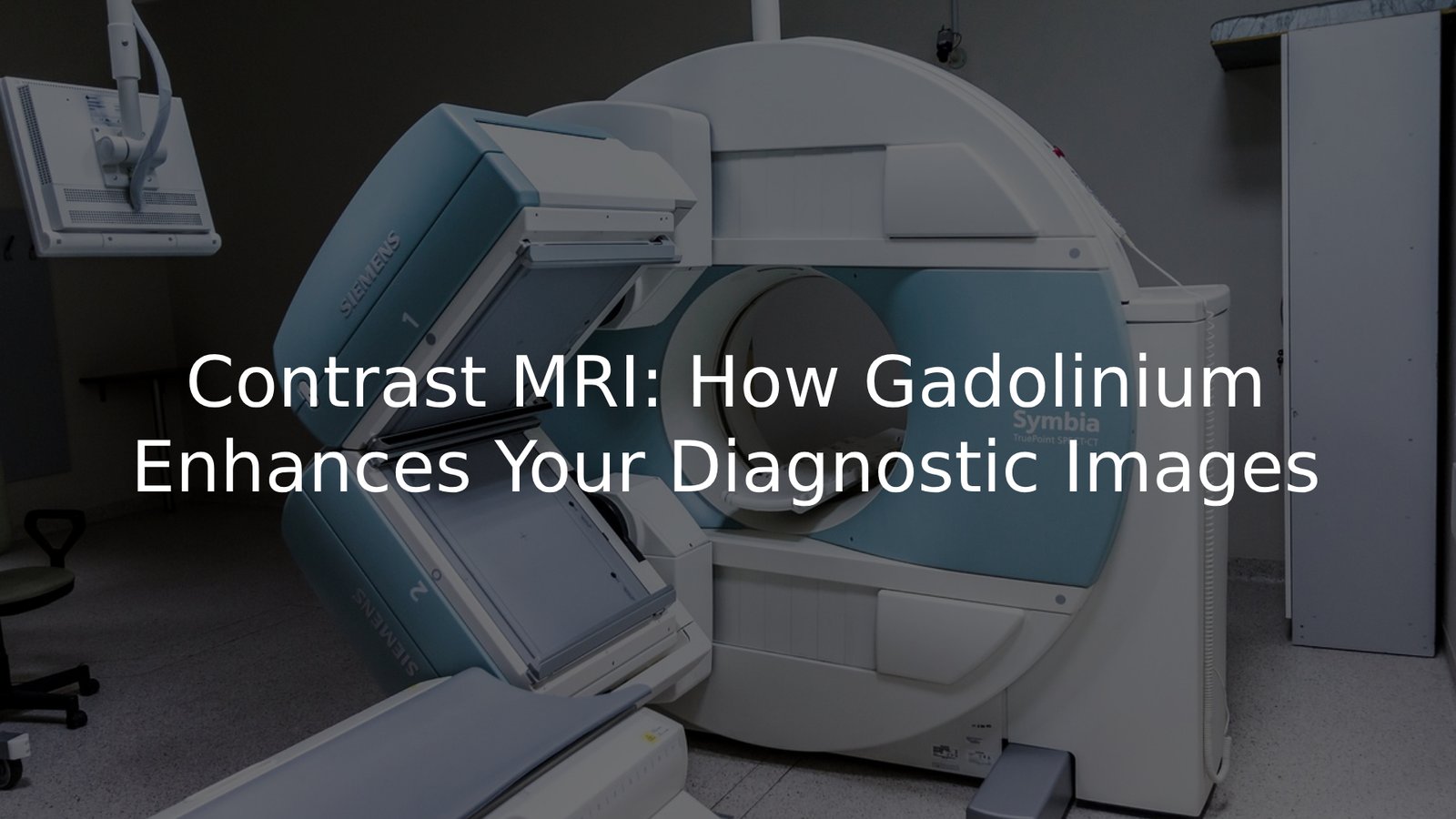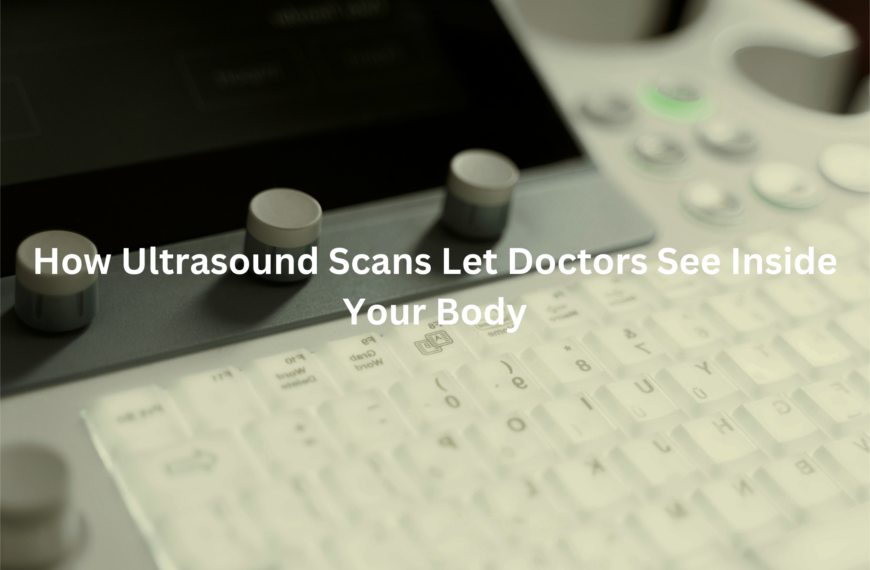Learn how contrast MRI improves diagnostic imaging, making it safer and more effective for a range of conditions.
Contrast MRI, also known as contrast-enhanced magnetic resonance imaging, uses gadolinium-based agents to enhance image quality, helping healthcare professionals identify abnormalities such as tumours, aneurysms, and vascular malformations more effectively.
By improving the visibility of soft tissues, blood vessels, and internal organs, it provides a clearer view to support diagnosis and treatment planning.
Key Takeaway
- Gadolinium-based contrast agents (GBCAs) improve MRI by enhancing the visibility of soft tissues and blood vessels.
- RANZCR guidelines ensure the safe use of GBCAs, with an emphasis on kidney function and minimising dosage.
- MRI procedures are painless and non-invasive, but safety precautions for metal implants and health conditions are essential.
How Contrast MRI Works
Contrast-enhanced MRI uses a special contrast agent called gadolinium-based contrast agents (GBCAs) to improve the clarity of the images.
These agents work by altering the magnetic properties of hydrogen atoms in the body, making specific tissues or structures stand out more clearly during the scan. This technique is especially useful for spotting issues like tumours or lesions that could be difficult to detect otherwise.
Key points about GBCAs:
- Increase signal intensity in areas where they accumulate.
- Make blood vessels, soft tissues, and abnormalities like tumours more visible.
- Help identify small or hard-to-spot issues that might be missed without contrast. (1)
RANZCR Guidelines for Safe Use of GBCAs
Now, we can’t ignore the need for safety when it comes to using these agents. The Royal Australian and New Zealand College of Radiologists (RANZCR) has put in place guidelines to ensure that the risks involved in using GBCAs are minimised.
Patient Pre-Screening
Before proceeding with a contrast-enhanced MRI, it’s essential for patients to undergo a thorough pre-screening. This ensures that any potential risks are identified early on. The process includes checking for allergies, assessing kidney function, and considering any other health conditions that might increase the risk of complications.
Patients with allergies or poor kidney function are more likely to experience adverse reactions to the contrast agent.
Key pre-screening steps:
- Check for allergies, especially to gadolinium-based contrast agents.
- Assess kidney function to ensure it’s safe for contrast use.
- Review any other health conditions that could affect the procedure.
Minimising the Dosage
A key recommendation when using gadolinium-based contrast agents (GBCAs) is to keep the dosage as low as possible. The amount given should be based on the patient’s weight and the specific clinical need for enhanced images.
By reducing the dosage, the risk of side effects can be minimised while still ensuring clear, high-quality MRI images. It’s all about finding the right balance—getting the necessary diagnostic information without compromising the patient’s health.
Important dosage considerations:
- Adjust the dosage according to the patient’s weight and clinical requirements.
- Minimise the GBCA amount to reduce the risk of side effects.
- Focus on efficiency without compromising patient safety.
Kidney Disease Considerations
For patients with kidney disease, additional care is necessary when using gadolinium-based contrast agents (GBCAs). The guidelines advise using low-risk, macrocyclic agents while ensuring the smallest effective dose.
This reduces the potential risks to kidney health. Close monitoring during the procedure is essential, and if the risks are too high, alternative imaging methods may be considered.
Key points for patients with kidney disease:
- Choose low-risk, macrocyclic GBCAs and keep the dose to a minimum.
- Closely monitor patients during and after the procedure.
- Consider alternative imaging techniques if the risks are too great.
Monitoring and Documentation
After administering the contrast agent, it’s essential to record the dosage accurately. This ensures that all procedures are transparent and can be audited in the future.
If any immediate reactions occur, such as extravasation (when the contrast leaks out of the vein), these need to be observed closely and documented without delay. Quick response to these reactions helps mitigate risks and ensures patient safety.
Key actions to take post-administration:
- Document the exact dose of the contrast agent for audit purposes.
- Monitor for immediate reactions, especially contrast media extravasation.
- Record any adverse events promptly for further review.
Adverse Reactions to Gadolinium-Based Contrast Agents
While most patients experience no major issues with GBCAs, it’s still important to be aware of potential risks. The most common side effects are generally mild and short-lived, such as a metallic taste in the mouth, nausea, or headaches. These usually disappear after a short period.
More severe reactions are rare, but can occur:
- Allergic reactions, which may range from a mild rash to more serious symptoms.
- Nephrogenic systemic fibrosis (NSF), a rare but severe condition affecting skin and organs, mainly in patients with kidney failure.
In cases of extravasation (contrast leakage outside the vein), immediate care is necessary to prevent complications. (2)
Preparation and MRI Procedure
An MRI scan is a non-invasive procedure, meaning no surgery is involved, and patients won’t feel any pain during the process. Depending on the type of scan, it may take a little longer. MRI uses a strong magnetic field to create detailed images of the body’s internal structures. While this might sound a bit daunting, the procedure is generally very safe.
Key things to keep in mind:
- If you have metal implants, pacemakers, or body piercings, it’s important to inform your doctor or MRI technologist beforehand, as these can interfere with the magnetic field.
The MRI technologist will ensure your safety and comfort, guiding you through the procedure and explaining what to expect.
Post-Procedure Care After Contrast MRI
After the MRI scan, it’s essential for patients to stay hydrated. Drinking plenty of fluids helps to flush the contrast agent out of the body, reducing the risk of side effects and aiding in a quicker recovery.
Key points to remember:
- Hydration is key to help eliminate the contrast agent from the system.
- There’s no need to stop taking medications like metformin post-scan, as the contrast agents used in MRIs don’t typically interfere with this medication.
By following these simple steps, patients can ensure a smoother recovery and continue their regular medication routine without worry.
Contrast MRI Applications and Diagnostic Benefits
Credits: MRI Centrum
Contrast-enhanced MRI provides crucial imaging that improves the visibility of blood vessels, soft tissues, and internal organs. This technique is especially beneficial for detecting:
- Vascular malformations
- Brain aneurysms
- Coronary artery disease
- Liver disease
- Heart conditions
By making these structures clearer, contrast MRI aids in the early diagnosis of conditions, particularly tumours and lesions. Without the contrast agent, these issues could be harder to detect or missed entirely. Early detection can lead to more effective treatments and better outcomes for patients, making contrast MRI an essential tool in modern healthcare.
Managing Risks in Contrast MRI
Like any medical procedure, contrast MRIs come with both benefits and risks. They provide highly detailed images that can significantly improve diagnosis, but there’s always a possibility of adverse reactions.
Key considerations include:
- Assessing each patient’s health status before proceeding.
- Weighing the risks of potential side effects against the imaging benefits.
- Exploring alternative methods, like CT scans or ultrasounds, if needed.
By carefully evaluating these factors, healthcare professionals can choose the most appropriate imaging approach, ensuring patient safety while maximising diagnostic accuracy. The aim is always to select the method that offers the greatest benefit with the least risk.
Understanding Magnetic Field and MRI Safety
Patient safety during an MRI scan is essential. The strong magnetic field in MRI scans can affect metal objects, such as implants, pacemakers, or body piercings, potentially causing them to move or lead to other complications. It’s important that patients inform the MRI team about any metal in or on their bodies.
Key safety considerations include:
- Disclose any implants, pacemakers, or piercings to the MRI technologist.
- Ensure all safety protocols are followed before the scan begins.
- Trust that the technologist will create a safe environment based on the known effects of the magnetic field.
By being transparent about any metal in their body, patients can ensure a safe and smooth scan.
Conclusion
When it comes to contrast MRIs, the key takeaway is that they can offer incredibly detailed images that are crucial for diagnosing various conditions. However, it’s just as important to ensure that everything is done safely—from pre-screening and minimising contrast dosages to monitoring post-procedure care.
So, if you’re having a contrast MRI, make sure to stay hydrated afterwards, follow the technologist’s instructions carefully, and don’t hesitate to ask questions if you’re unsure about the procedure. That way, you can feel confident that the MRI will be both safe and effective for your health needs.
References
- https://www.insideradiology.com.au/gadolinium-contrast-medium/
- https://www.msaustralia.org.au/news/use-gadolinium-mri-scans-ms/




